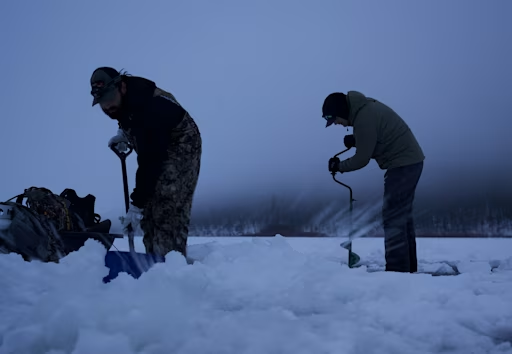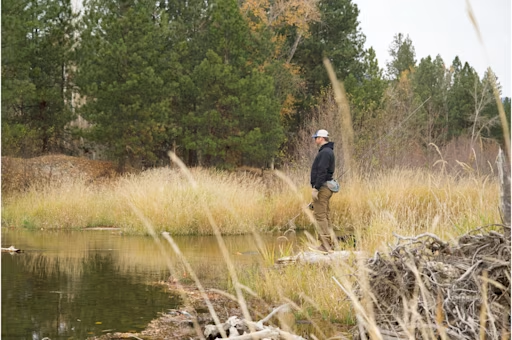Topwater tactics with Erik Luzak
Learn some of the tactics and baits used by pro angler and Lunkerhunt sponsored athlete Erik Luzak. Luzak has 25 years of competitive fishing experience and participates in the Major League Fishing circuit.
Share this article

Banner Photo Credit: Major League Fishing
Nothing can compare to the thrill of setting a topwater hook on a large bass. The explosion of water, near misses and aggressive takes are the peak of excitement on he bass lake. Fishbrain had the pleasure to interview Canadian pro angler Erik Luzak. Luzak competes in the Major League Fishing Circuit and routinely uses topwater tactics in tournaments to catch fish along the shoreline and in open water.
Why Topwater

Luzak has Been fishing tournaments for 25 years, but it was topwater fishing that got him into tournament fishing.
“I started like a lot of people do with a bobber and worm, but somewhere along the line got a hula popper. I caught a four pound bass with that popper and was instantly addicted.”
There’s just something special about the anticipation of waiting for that hit and getting that hit, but it can be just as productive as it is exciting.
“It's still one of my go to methods. When I need a big bass in a tournament I go to a topwater frog in shallow water. There's something about that aggression with a big bass. It even works when I'm fishing for offshore schooling fish in reservoirs.”
When
Luzak says when you throw your floating lures is all dependent on where you are, but anytime around spawning time in shallow water is a golden opportunity. Fish will always be the most aggressive post spawn. During the actual spawn you can locate bass but you may have a harder time getting them to take the bait.
Stay close to shore, and use poppers and hollow body frogs near docks and weed beds.
Lunkerhunt’s compact frogs work great with surface vegetation for this.
You can also get a great midsummer bite on topwater. On early mornings and overcast days Luzak suggests targeting offshore schooling bass with a pencil popper. He says these offshore schools will travel together targeting shad and other baitfish.
“Don't think you have to be shallow for topwater. Schooling fish will be in deep water even in 100 feet but still be looking up toward the surface for those baitfish,” Luzak says.
Species

“Largemouth and smallmouth go hand in hand,” he says. “The pencil popper works particularly great for smallmouth.”
Luzak also suggests trying for early spring pike with topwater baits. Frog baits and the impact turbine buzz bait are great lures to target spawning pike in the shallows. Cast these at shallow targets like weed beds where pike lay and they will annihilate a buzz bait.
“Stripers will also attack a pencil popper like you wont believe,” Luzak says.
Cloudy days and in the mornings, stripers are looking up to ambush baitfish. Your pencil popper imitates a fleeing, or wounded, baitfish being pushed toward the surface by predators and stripers can't resist.
Tactics

Pencil Popper: If you see fish breaking the surface of the water, this is the best case scenario for the pencil popper. This means bass are feeding on baitfish toward the surface and the way a popper imitates a wounded baitfish will be a slam dunk. If fish aren't working the surface, target underwater brush piles. Bass will use these as cover and look toward the surface for ambush opportunities. Cast the popper over the brush to get a bucketmouth’s attention.
Don't think you have to be shallow for topwater techniques. Schooling fish will be in deep water. Even in
100 feet of water, bass will still be looking up toward the surface.

Compact Frog: The frog should be casted into surface vegetation like, lilies, water willow, docks, overhanging trees etc. Bass use these points as ambush spots and these are areas the amphibians regularly live in. Frogs have a spawning period too and if you can track that, the bass will be keying in on it as well.
Gear
Luzak says your choice of gear with the frog is very important. “You absolutely need braided line” he says, and he prefers 50 pounds.
Luzak also prefers a baitcasting reel and seven and a half foot medium heavy/heavy rod with a parabolic bend.
He prefers this setup because of fishing near lilies and other aquatic vegetation. Not only does your gear need the ability to pull through weeds, or lilies, but as soon as a bass is hooked it will often dive straight for this cover. Your rod needs the strength to turn the fish’s head and get it out of this structure and your line needs to hold up this tension as well.
Don’t jump the gun before you set the hook. Luzak suggests waiting around two seconds before a hard hook set, to make sure the lure is set properly in the fish’s mouth. A parabolic rod will also help keep the hook set in the mouth by providing just enough flex to keep tension constantly.
Stiffer rods will actually create slack by pulling too hard and then releasing.
Luzak also recommends 30 pound braided line with a medium action rod for pencil poppers and crush poppers. His favorite rod for poppers is a seven foot medium to moderate rod. He says if you are using treble hooks, you want to use a medium to moderate sweeping hook set and try to keep the fish’s head down. When you’re using these baits, you’re usually in open water and don’t need to worry about horsing them out of the weeds, or structure.
He says the one hard and fast rule, when it comes to topwater gear, is you cannot use fluorocarbon because it sinks and will pull your bait down ruining the action.
There’s nothing like the chaos and excitement of a topwater hook set. Be sure to check out the full array of topwater lures from Lunkerhunt on the Fishbrain store. Take full advantage of those still, summer mornings on the lake, or pond this year and don’t forget to post all your topwater catches onto the Fishbrain App.

Download the Fishbrain app and access the best fishing spots in your area
Related blog posts
Master the hardwater season with advanced ice fishing tips . Learn how to find fish faster, refine your search and adjust presentations to catch more fish all winter long.

Your guide to Victoria’s best fish to catch in rivers, lakes, and coastal waters. Learn prime species, fishing tips, and key regulations

Learn how fish adapt as water temperatures cool from autumn to winter, including changes in behavior, metabolism, and habitat that help them survive.




